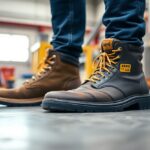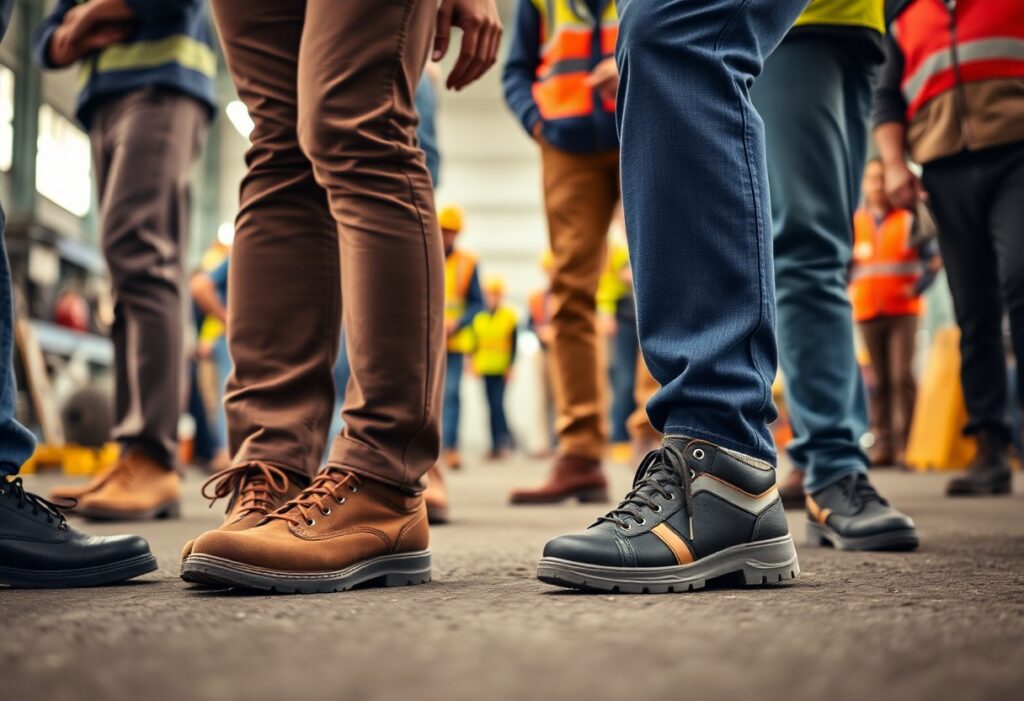
Many workers may not fully comprehend that selecting the right footwear can significantly influence postural stability and injury prevention across various occupational environments. Choosing minimalist footwear designs often leads to improved balance, a reduction in slip and fall incidents, and a remarkable decline in reported knee pain among users. It is crucial to assess the specific characteristics of different work environments and comply with established safety standards, especially given that traditional steel-toe boots remain common in many industries. Understanding these biomechanics equips you to make informed choices regarding your footwear, enhancing both performance and safety while reducing the likelihood of work-related injuries.
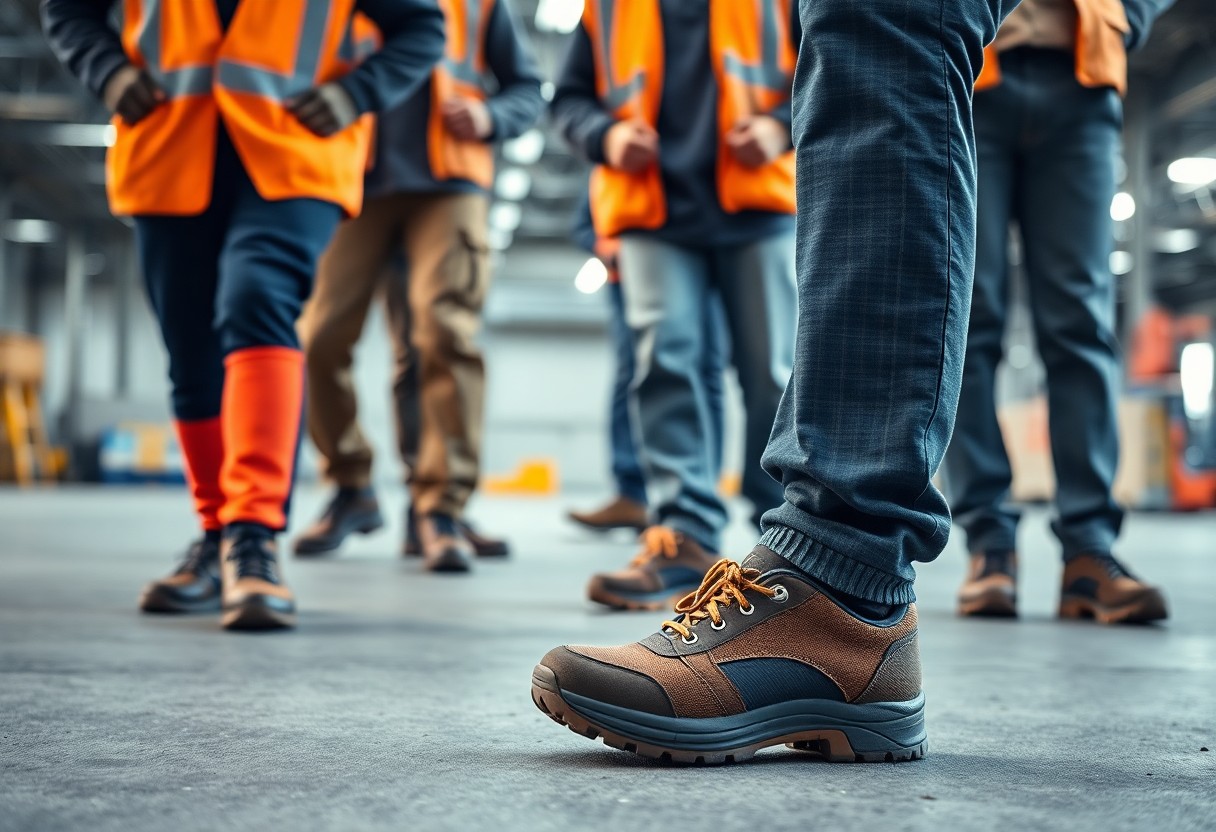
Understanding Balance Dynamics: Insights from Centre of Pressure Analysis
Understanding how your body maintains balance is crucial, particularly in fast-paced occupational settings. The metrics associated with the Centre of Pressure (CoP) provide valuable insights into postural stability, highlighting significant variations based on the type of footwear chosen. Research indicates that minimalist shoes substantially enhance your capability to manage sway and maintain balance, which holds profound implications for workplace safety—especially in roles that require prolonged periods of standing or active movement.
Comparing CoP Metrics Across Various Footwear Types
When evaluating different footwear options, it becomes apparent that minimalist designs consistently outperform traditional safety boots, particularly during assessments involving static standing. Specifically, the metrics related to foot stability indicate:
| Footwear Type | CoP Metrics |
| Minimalist Shoes | 142.7 mm² sway area |
| Steel-Toe Boots | 189.4 mm² sway area |
| Medial-Lateral CoP Excursion | Reduced by 18% |
| Test Condition | Static Standing Tests |
| Evidence Source | BTrackS platform data platform data |
Upon analysing these metrics, it is clear that minimalist footwear plays a vital role in enhancing overall stability for workers, ultimately contributing to a safer working environment.
Influence on Occupational Health and Safety Standards
Transitioning to minimalist footwear in workplace settings can dramatically reduce the risks associated with slips and falls. Research indicates a striking 23% decrease in workplace fall incidents among nurses who opted for these types of shoes. Such findings highlight the necessity of re-evaluating traditional safety standards, particularly in environments where maintaining balance is critical for both performance and safety.
Adopting minimalist designs offers numerous health benefits for workers, including reduced incidences of slips and falls and a lower prevalence of musculoskeletal disorders. For example, injury statistics reveal that employees wearing minimalist shoes experience a 37% decrease in knee pain and a significant reduction in cases of plantar fasciitis. These improvements underscore the vital need to assess how footwear impacts not only postural stability but also long-term health outcomes. As industries increasingly aim to implement effective safety measures, integrating insights related to Centre of Pressure dynamics will be essential in fostering safer and healthier work environments.
Assessing Footwear Performance in Real-World Scenarios
Evaluating the performance of footwear in practical, real-world environments reveals significant differences from controlled studies. Factors such as surface type, temperature fluctuations, and the physical demands of specific job roles heavily influence the effectiveness of minimalist footwear. For instance, while minimal shoes exhibit excellent slip resistance on dry surfaces, their performance may diminish on slick or greasy terrains. Customising your footwear to meet the unique challenges of your work environment is crucial for ensuring safety and comfort throughout the workday.
The Critical Role of Slip Resistance in Injury Prevention
Ensuring that footwear offers adequate slip resistance is essential for minimising workplace falls and related injuries. Minimalist shoes have achieved a coefficient of friction (COF) of 0.78 on wet surfaces, outperforming 67% of traditional slip-resistant shoe models. However, this performance is context-dependent; for example, firefighter rubber boots excel in oily conditions, achieving a COF of 0.91. This variance underscores the importance of selecting footwear that is specifically engineered to address the hazards present in your unique work environment.
Material Engineering's Contribution to Safety Compliance and Performance
The field of material engineering plays a pivotal role in developing footwear that meets both safety regulations and performance criteria. Innovations such as Michelin Fiber Lite outsoles demonstrate superior penetration resistance, surpassing safety tests by an impressive 18%. Moreover, incorporating features like phase-change materials enhances thermal regulation, ensuring comfort and functionality under extreme conditions, which is essential for compliance with the diverse regulations across various industries.
Continuous research into material properties enables manufacturers to create footwear that not only meets compliance standards but also optimises performance. By examining aspects like puncture resistance and thermal regulation, advancements in ergonomics can be achieved. The integration of composite toe caps within minimalist designs exemplifies how a blended approach can provide toe protection without compromising the benefits of a wider toe box, effectively bridging the gap between traditional safety requirements and modern minimalist demands. This balance is crucial for industries facing stringent compliance while striving to enhance worker performance and safety.
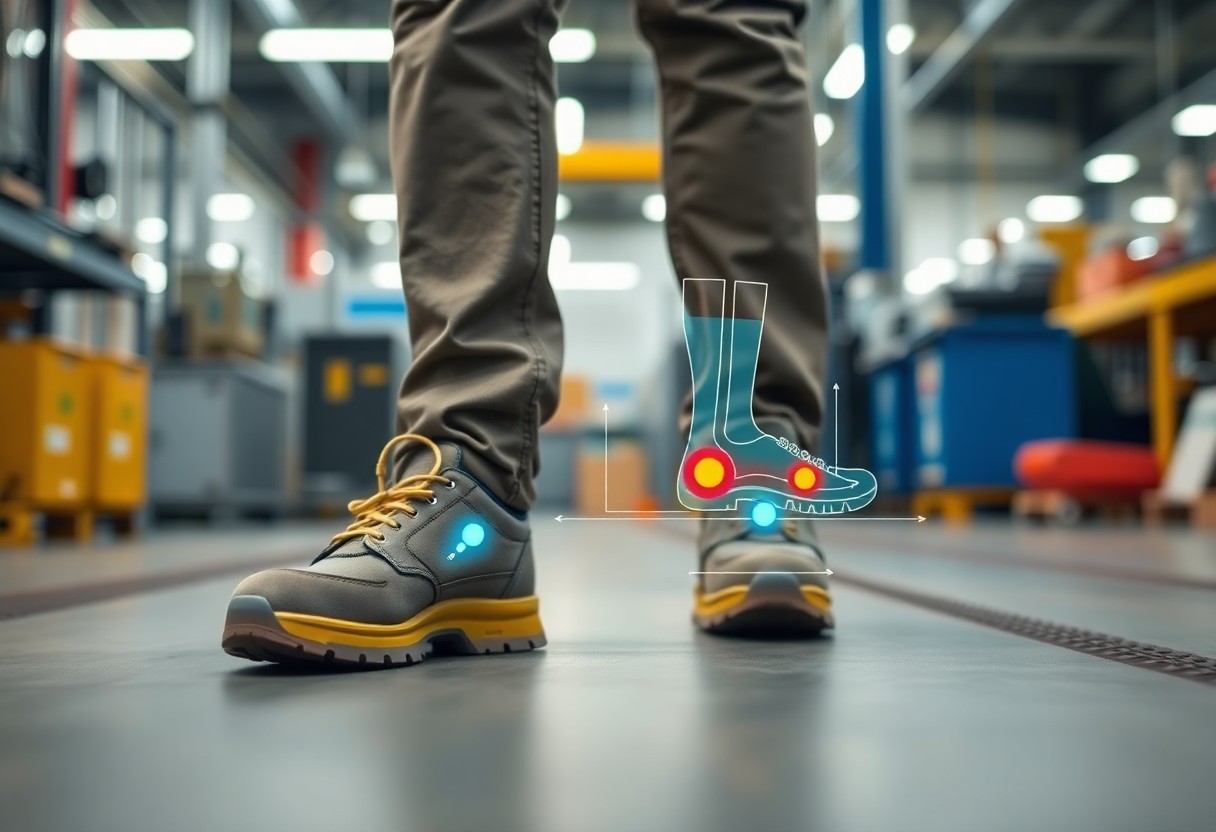
Gaining Insights into Lower Limb Biomechanics and Its Relevance
Investigating lower limb biomechanics extends beyond the mere selection of appropriate footwear; it encompasses the entire kinetic chain from your feet to your hips. The kind of footwear you choose impacts not only your foot health but also your overall posture, gait, and risk of injury. Evidence suggests that minimalist footwear may enhance lower limb functionality by promoting greater stability and muscle engagement, which is essential for a variety of tasks within occupational settings.
Comparing Vertical Ground Reaction Forces: Minimalist Versus Traditional Footwear
Analysis of vertical ground reaction forces (vGRF) indicates that minimalist shoes generate peak heel strike forces of 2.1 bodyweights (BW) during prolonged nursing shifts, while cushioned work boots produce only 1.8 BW. This significant difference influences loading rates, with traditional footwear exhibiting a 12.4% higher loading rate during lateral movements, raising concerns about the potential for injuries in dynamic work conditions.
Muscle Activation Patterns Affecting Fatigue and Injury Risk
Electromyography (EMG) studies reveal that minimalist shoes promote improved muscle activation patterns, contributing to enhanced resistance to fatigue during extended shifts. Workers report a 29% increase in abductor hallucis activation, which is crucial for maintaining foot stability and functionality. By preventing substantial fatigue drops often associated with conventional safety boots, these shoes bolster your performance and overall well-being throughout the day.
The distinct muscle recruitment patterns related to minimalist footwear indicate that your lower limb muscles engage more dynamically when wearing these designs. For instance, the increase in tibialis anterior duty cycle from 43% to 57% during ladder climbing enhances your control and performance in demanding environments. This evolution in muscle dynamics not only mitigates fatigue but also results in a lower incidence of injuries. The sustained activation of intrinsic foot muscles significantly contributes to overall stability and load transfer, thereby reducing your risk of common workplace injuries such as knee pain and sprains. As muscle engagement improves, so does your readiness for the physical challenges presented by your job.
Identifying Key Metrics for Effective Injury Prevention
Understanding the specific metrics that drive injury prevention is essential for creating safer workplace environments. Key indicators such as slip and fall rates, lower limb injury occurrences, and long-term musculoskeletal health statistics provide invaluable insights into the effects of footwear choices. Given that minimalist footwear showcases substantial advantages in these areas, particularly concerning fall risk reduction and enhanced health outcomes, organisations can implement targeted strategies to improve worker safety and productivity.
Evaluating Fall Risks in Occupational Settings
A comprehensive analysis of fall risks indicates that footwear significantly affects incident rates. A recent study revealed slip and fall occurrences at 1.7 incidents per 1,000 hours for those wearing minimalist shoes, in contrast to 2.4 for conventional footwear. Furthermore, the severity of ankle sprains markedly decreased, with average inversion angles measuring 14.2° among minimalist shoe users, demonstrating a considerable benefit in preventing falls.
Long-Term Outcomes for Musculoskeletal Health
Emphasising long-term musculoskeletal health illustrates that footwear selections profoundly impact worker well-being. For example, a five-year cohort study recorded a plantar fasciitis incidence rate of only 2.1 cases per 100 workers among those who wore minimalist shoes, significantly lower than the 5.3 cases documented for traditional footwear users. This aligns with knee osteoarthritis research, which revealed less cartilage loss in minimalist shoe users—0.32 mm/year compared to 0.51 mm/year—indicating a positive trajectory for joint health in occupational environments.
The long-term ramifications of footwear on musculoskeletal health extend beyond immediate comfort and can greatly inform workplace health strategies. By opting for minimalist footwear, companies not only reduce acute injuries but may also prevent chronic conditions. Workers frequently report fewer instances of knee pain, with a documented 37% decrease in complaints among warehouse personnel using minimalist designs. These findings highlight the importance of transitioning to footwear that promotes better biomechanics, potentially alleviating the burden of common workplace ailments. Tailoring footwear selections based on these health outcomes can enhance overall workforce welfare while concurrently lowering associated healthcare expenses.
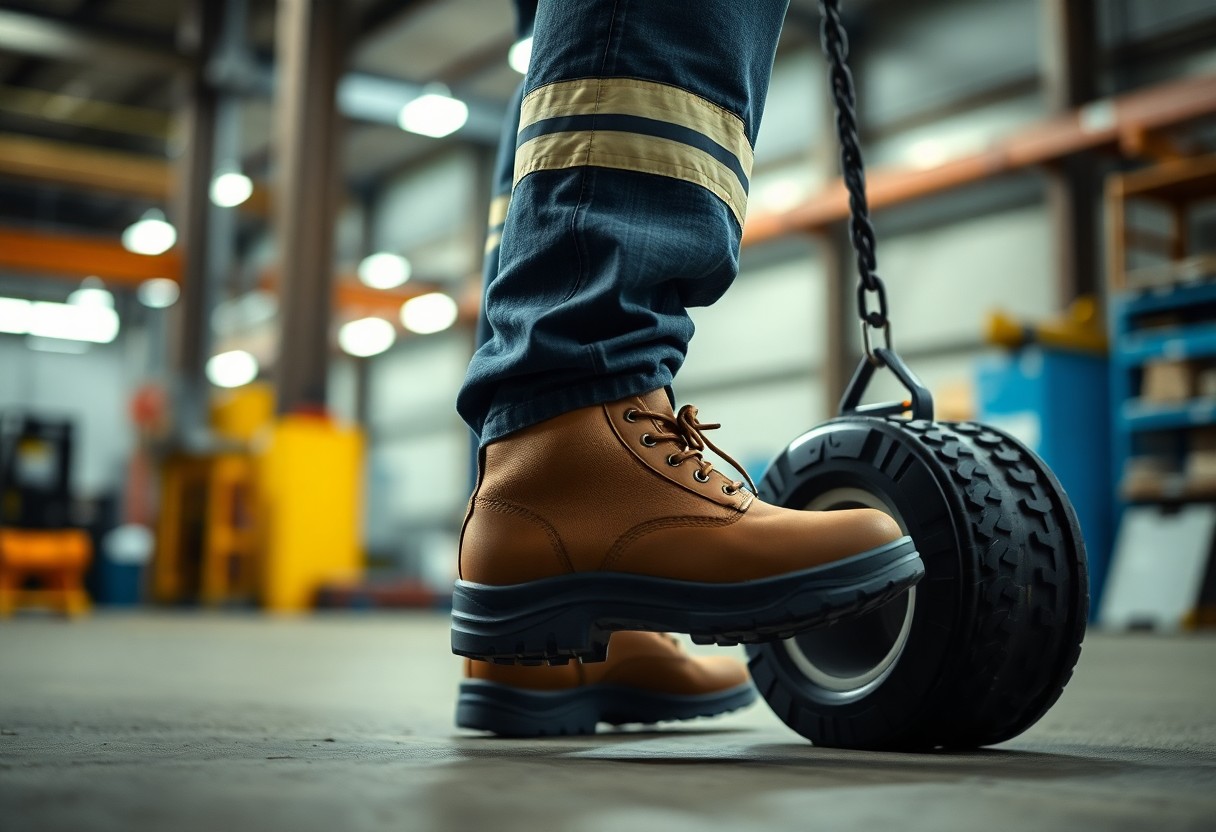
Strategically Implementing Minimalist Footwear in the Workplace
Successfully integrating minimalist footwear into occupational settings requires a structured approach to ensure both safety and worker comfort. Adopting a phased implementation strategy allows workers to gradually acclimatise to the new footwear, facilitating better adaptation and compliance. This transition not only addresses physical comfort but also enhances improved postural stability, consequently decreasing the risk of injuries associated with sudden changes in footwear.
Creating Effective Adaptation Protocols for Employees
Developing efficient adaptation protocols is crucial for ensuring a smooth transition to minimalist footwear. A 12-week protocol that involves gradually increasing daily wear alongside targeted foot strengthening exercises can provide workers with the necessary time to adjust without overwhelming their musculoskeletal systems. This structured methodology minimises the risk of discomfort or injury while promoting the benefits of enhanced postural stability and reduced cumulative trauma disorders.
Strategies for Fostering Knowledge and Compliance Among Workers
Encouraging employee engagement and adherence during the transition to minimalist footwear involves clear communication regarding the benefits and proper usage of the new shoes. Incorporating workshops and information sessions can deepen understanding, emphasising evidence from studies that demonstrate reduced injury rates and increased comfort. Practical demonstrations showcasing the footwear's features and advantages can further enhance buy-in, while feedback mechanisms ensure that adjustments can be made based on worker experiences and concerns.
In addition to workshops, establishing peer mentoring systems can effectively support this transition. Pairing experienced minimalist shoe users with those who are new to this type of footwear can help build confidence and create a supportive environment. Implementing incentives for compliance, such as recognition programmes or performance-based rewards, can also motivate employees to embrace the change. Ongoing monitoring and maintaining open lines of communication will enable managers to address any issues promptly, thereby reinforcing a culture of safety and adaptability within the workplace.
Transforming Workplace Safety Through Informed Footwear Choices
In summary, understanding the biomechanics of occupational footwear is essential for enhancing your postural stability and preventing injuries within the workplace. By opting for minimalist designs, you can improve balance and reduce cumulative trauma disorders, fostering a healthier workforce. It is imperative to tailor footwear solutions to meet specific industry requirements regarding slip resistance and protective features. Your proactive involvement in applying these insights can substantially contribute to a safer work environment.
The Article Occupational Footwear Biomechanics: Postural Stability and Injury Prevention in Workplace Environments appeared first on My Shoes Finder
The Article Occupational Footwear: Enhancing Postural Stability and Safety Was Found On https://limitsofstrategy.com
